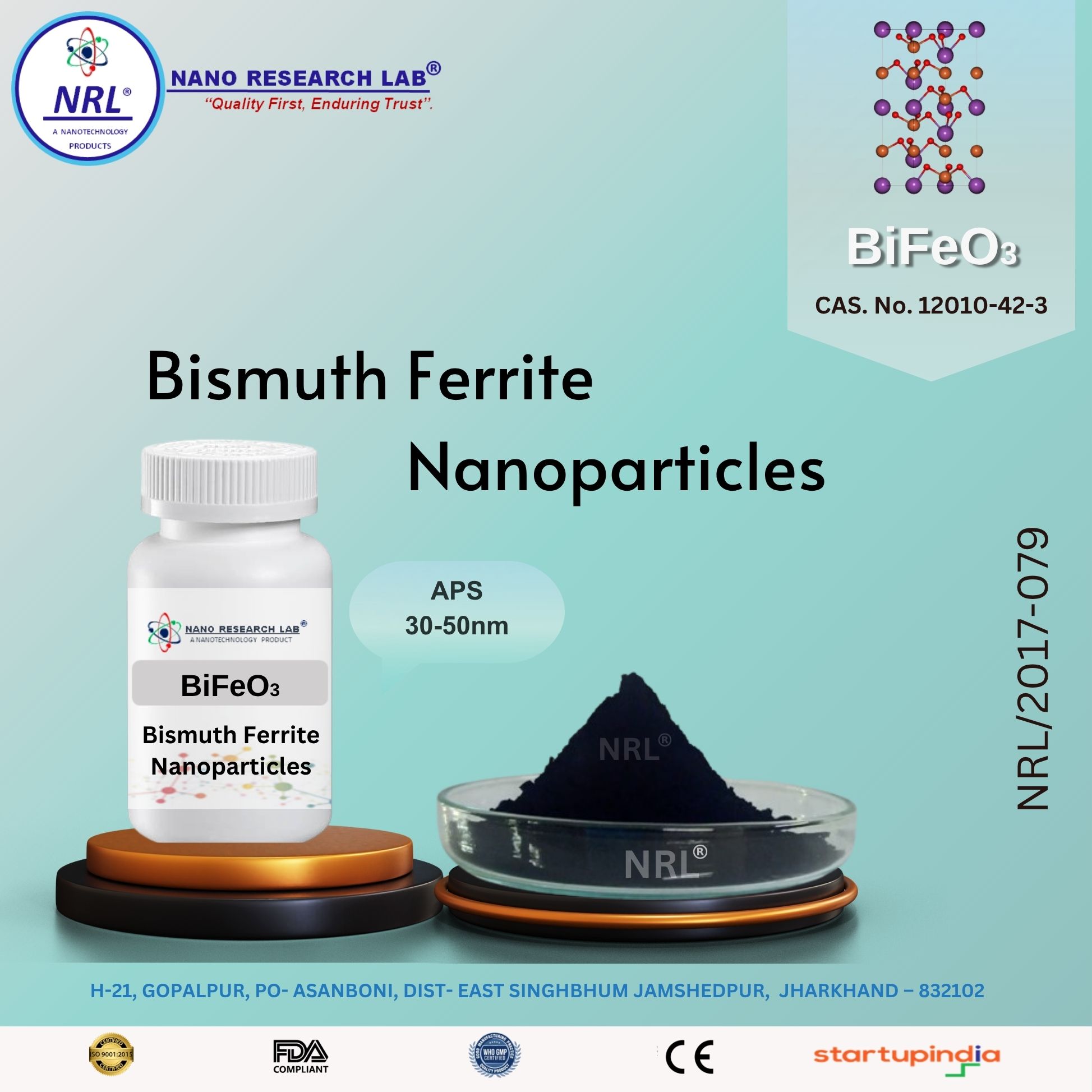
Bismuth Ferrite Nanoparticles / Nanopowder(BiFeO3, Purity >99%, APS 30-50nm)
₹1475.00
Bismuth Ferrite Nanoparticles / Nanopowder (BiFeO₃, Purity >99%, APS 30–50 nm)
⚙️ Technical Specifications
Property | Specification |
|---|---|
Product Name | Bismuth Ferrite Nanoparticles / Nanopowder |
Chemical Formula | BiFeO₃ |
Purity | >99% |
Average Particle Size (APS) | 30–50 nm |
Appearance | Reddish-brown fine powder |
Crystal Structure | Rhombohedral (perovskite-type) |
Density | ~8.34 g/cm³ |
Magnetic Type | Multiferroic (antiferromagnetic with weak ferromagnetism) |
Curie / Néel Temperature | ~830 K (magnetic), ~1100 K (ferroelectric) |
Band Gap | ~2.1–2.7 eV |
Solubility | Insoluble in water; reacts with strong acids |
CAS Number | 12058-16-5 |
🌟 Key Features
High-purity (>99%) BiFeO₃ nanoparticles with controlled 30–50 nm particle size
Exhibits multiferroic properties: coexisting ferroelectricity and magnetism
Strong photocatalytic and piezoelectric behavior
High thermal and chemical stability
Non-toxic and environmentally stable perovskite material
Ideal for spintronics, magnetoelectric devices, and photocatalysis
🔬 Applications (in Detail)
1. Spintronics & Multifunctional Devices
BiFeO₃ is a room-temperature multiferroic material, enabling devices with coupled electric and magnetic properties.
Used in magnetoelectric sensors, memory devices (ME-RAM), and spintronic applications.
2. Photocatalysis & Environmental Applications
Exhibits visible-light photocatalytic activity for organic pollutant degradation.
Applied in water treatment, dye degradation, and photocatalytic hydrogen generation.
3. Energy Harvesting & Piezoelectric Devices
Strong piezoelectric and ferroelectric properties make it suitable for nanogenerators and energy harvesting devices.
Used in MEMS/NEMS sensors for vibration and pressure sensing.
4. Magnetic & Electronic Applications
Weak ferromagnetic behavior allows usage in magnetic storage, spin filters, and magnetic sensors.
Applicable in nanoelectronics for multifunctional material systems.
5. Research & Advanced Material Studies
Used in materials science, nanotechnology, and condensed matter research.
Ideal for ferroelectric, magnetoelectric, and multiferroic studies.
6. Photovoltaics & Optoelectronics
Narrow band gap (~2.1–2.7 eV) allows visible light absorption.
Can be integrated into solar cells, photodetectors, and optoelectronic devices.
⚠️ Handling & Storage
Store in a sealed, dry container in a cool environment.
Avoid moisture and strong acids.
Use gloves, mask, and protective eyewear when handling nanoparticles.
Minimize exposure to airborne dust during handling and processing.
